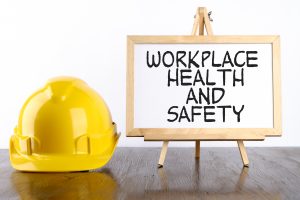
- External walls usually refer to the outside walls of a building. They will generally need little maintenance but should be inspected at least annually for signs of deterioration or water damage.
- For all roofing or chimney maintenance work, it is essential to ensure that adequate safety arrangements are in place for working at height.
- Gutters should be inspected and cleared at least twice a year, sometimes more frequently if a roof is overhung by trees.
- Ensuring that a floor is well maintained will not only preserve the appearance of a building but will also contribute to safety by making slips and trips less likely.
- Windows should be regularly maintained and cleaned so they can be opened easily for ventilation and allow in sufficient light.
- There is no statutory obligation to keep an external or outside wall in a good state of repair. However, if it is in a dangerous state and falls and injures someone, the owner or occupier may be liable.
- To maintain their grounds and outside areas, an organisation may employ their own staff or engage specialist contractors.
- It is imperative that in-house facilities maintenance staff and maintenance contractors observe good health and safety practice at all times.
- Suitable information and training must be provided to employees with maintenance responsibilities.
How to Maintain Ceilings
- Wash down and repaint surfaces that have been painted.
- Repair ceilings where lining paper or plaster is used, by re-plastering or recovering.
- Refer to manufacturers’ instructions when redecorating: decorating may change the characteristics of a material, eg for any specifically treated fire-resistant surfaces.
- Investigate any observations of damp stains, blistering of paint or lining paper, black mould growth, or cracking to prevent possible ceiling collapse.
- Apply a sterilisation solution according to the manufacturer’s instructions followed by repainting, preferably with an anti-fungicidal paint, to deal with black mould or damp stains. A longer-term solution would be to improve the heating or ventilation.
- Repair any hair cracks by lining the ceiling with a stout lining and then painting it.
- Seek specialist advice for any larger problems such as large cracks.
How to Maintain Grounds
- Weigh up the pros and cons of using in-house staff or contractors to maintain the grounds.
- Consider the attractiveness of plants and trees against maintenance costs.
- Be aware that shrubs and flower beds are a trap for litter and easy targets for vandalism.
- Position trees so they do not damage the foundations of buildings, do not provide cover for intruders and do not block the view of any security cameras.
- Keep records of every tree giving details of location, type, age and condition.
- Maintain footpaths and tarmac areas to a high standard to limit the potential for accidents and improve access.
- Implement ways of reducing the amount of litter generated on the premises.
- Check perimeter fences are adequate to keep out litter, pests and intruders.
How to Maintain Floors
- Check how each flooring material is best maintained. An incorrect cleaning program can change the slip properties of a floor, which can become dangerous.
- Treat any outbreaks of wood-boring insects with disinfestation liquid for a small localised problem. Where the outbreak is more extensive seek the advice of a specialist.
- Use jointless epoxy resin screeds or hard tiles to re-level well-worn and uneven areas of flooring.
- Remove areas of rubber burn on thermoplastic tiled finishes caused by shoes and trolley tyres by wiping with white spirit.
- Replace any thermoplastic tiles which are cracked.
- Brush linseed oil onto the floor to “feed” the timber or preservative staining to help prevent excessive shrinkage in boarded or wood-blocked flooring.
- Seek specialist advice for any larger problems such as cracking in suspended concrete floors or infection by dry rot on suspended timber floors.
Contact us if you have any queries.
